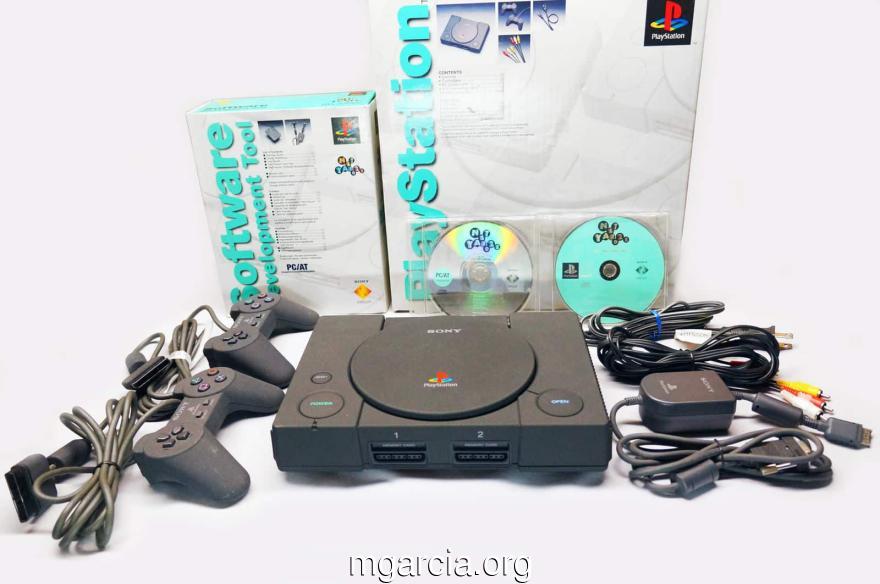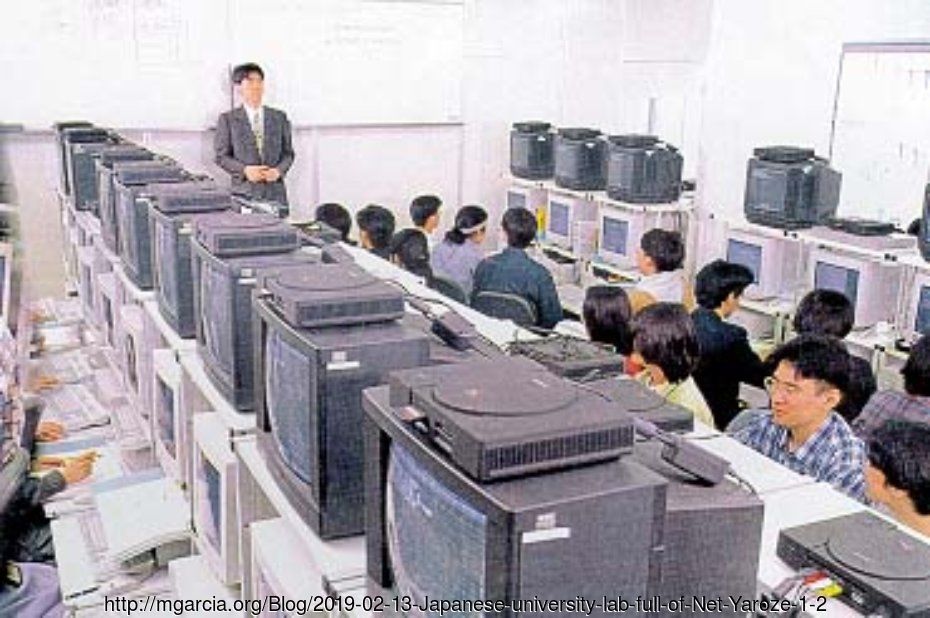
THE BLACK PLAYSTATION: Making games at home
August 07, 2020, at 10:29 AM (1 comments)
Title: THE BLACK PLAYSTATION: Making games at home Author: mgarcia Date: 2020-08-07 10:29 +0200 Tags: Media, Articles Comments: Open
|  |
Article from Official Australian PlayStation Magazine, issue #9 from April 1998.
Obviously, it doesn't mention Net Yaroze games released after early 1998.
Not all images from the article are here, but Youtube videos were inserted, if gameplay is available.
THE BLACK PLAYSTATION: Making games at home.
The Net Yaroze is Sony's global experiment at encouraging amateur gamers into the field of developing games for the PlayStation. Since its release almost two years ago. thousands of would-be programmers have joined the Yaroze team. Roscoe P. Coltrane investigates the fruits of their labour.
Net yaroze Net Yaroze - The State Of Play.
Many readers will have heard of the Net Yaroze PlayStation by now. Released about 18 months ago in Japan and a bit later everywhere else, the Yaroze is part of Sony's innovative effort to bring back the days of the lone programmer, and try and bring some new talent into the PlayStation game design world as well.
The Yaroze is basically a PlayStation with a PC interface and a bunch of software tools that allows games to be written on the PC (or Mac) and then dumped into the PlayStation for testing and playing. Thousands of black PlayStations have been sold all over the world, a number of which reside in various places around Australia and New Zealand, and people are starting to ask the question: where are the Yaroze games?
To be fair to the people who bought a Yaroze, it's still early days yet. Becoming a game designer and programmer from scratch is no mean feat! Another delaying factor that seems to have affected quite a few Yaroze programmers is the limitation the machine places on them only being able to use the PlayStation's internal code libraries, rather than allowing them to make their own. Libraries are sort of shortcuts the programmers can use when programming in C or another such language and it saves them having to write machine codes to access the base level commands and functions of the machine. The PlayStation's built in libraries aren't the best however, and run a bit too slowly to be used in cutting edge game design, which is why developers like Infogrames (V-Rally) and Psygnosis (Wipeout 2097, Formula 1) write their own libraries for each game they produce. Well, it seems that a lot of Yaroze owners want to do the same thing and many of them have spent their time working around the limitations that Sony placed on the Yaroze in the design of its programming software. So rather than develop games, what we have are a bunch of sub-programs, APIs and hacks which allow the owners to do more with the system than Sony originally intended. Yaroze owners who have concentrated on making games however, have been producing some interesting little demos, and some of the Japanese owners have made some very nice little games indeed (they got their machines six months before the west, mind you).

- Above-
- The elusive Net Yaroze PlayStation in all its matte black glory.
More than just cool looking, the Yaroze actually lets you write your own games.
The full Net Yaroze package comprises of the black PlayStation, software and connections to hook it up to your PC.
For players who've dreamed of making their own game, the Net Yaroze lets you do it.
All you need is a PC. a little talent, and time!
Paul Holman 1997 - Net Yaroze SCEE launch presentation video by Typowy - PsxPower
The Games.
Frustrated with a lack of vital information, PlayStation Magazine recently launched a covert operation aimed at liberating certain Yaroze demo discs from Sony HQ. After scaling the fence, shooting the guard dogs, seducing the receptionist and weeing in the toilet with the seat down, we actually managed to get our hands on some of these secret demos. Unfortunately, we lost a few men along the way but that, as they say, is the price of victory. From what we've seen on these discs, the Japanese Yaroze owners have definitely got the jump on everyone else. Some of the Japanese demos also look suspiciously like they've been put together by real commercial developers, but it's impossible to know for sure (until we raid Sony's bunker again at least).

Image: Montage of images from the article.
West.
The European Yaroze creations (most of which came out of England), all display a bit of nostalgia in their style, with a lot of the demos on that disc being recreations of old classics or simple graphics experiments. The most spot on of these is probably Tuna Technologies ManicX, which is a straight rip-off of that old classic Pac Man. ManicX is fast and polished and, while it may seem like a waste of the PlayStation's power, is very good for a first effort.
Manic X gameplay video by Ciccina Giuggiol
On the same but slightly different bent is Cars Barsted's Coneman (ahem), which is a 3D third person (ie. like Tomb Raider) Pac Man.
The Incredible Coneman gameplay video by chaosruins
Cars still has a bit to learn about gameplay however, with a really bad choice of viewing angle and control layout making this hard to play. The most accomplished works on the European disc are probably Stuart Ashley's Clone, Lewis Evans' Between the Eyes (featured on our issue #6 demo CD) and Engine 6 by Derek Leigh-Gilchrist. Clone is a simple Doom clone set in a dungeon type environment, and admittedly it's not something you'd want to pay money for. It is, however, very solid, and serves as an indication of the potential offered. The graphics are smooth and wobble free, the collision detection is on the money and the controls fast and responsive too.
Clone gameplay video by ACRetro
Between the Eyes is a 3D tunnel racer that allows you to chose one of several space ships and race computer opponents through a giant hollow psychedelic spaghetti. Engine 6 is a little on the freaky side too, but is simply a 3D engine test program with a few solid figures sitting in a 3D landscape. It does have one unique feature though - it demonstrates a special effect known as environmental mapping, something that the N64 has built in but which the PSX doesn't normally handle very well.
Between The Eyes gameplay video by PS1DemoMuseum
These games are from European developers and many show influences from past classics such as Pac Man. Breakout. Asteroids and a host of old Amiga titles.
East.
Unfortunately for the European ego, the Japanese disc leaves the European one for dead, both in terms of gameplay and production quality. It is here that we can see the Yaroze actually living up to its promise. As soon as we saw the first title it screamed ‘Japanese' so loudly we had a tourist bus pull up outside the office. No hackneyed old arcade cliches here. The stand out title is easily Fatal Soft's Terra Incognita, a sort of 3D RPG platform game, kind of like the love-child of FFVII and Gex 3D!
This effort was polished so hard it gleamed! A groovy little animated interactive intro and funny Jap-lish translation topped off a fast and smooth little gem. You could well be seeing this in stores some time in the future. The other really awesome game on this disc was a shooter that unfortunately had no English translation for its name or developer, so I'll refer to it as GameX. GameX is a truly beautiful thing and it's doubtful whether the developer used Sony's internal libraries - it's just too fast and busy for that. The closest thing I can compare it to is Xevious 3D, but it's even spunkier than that! A top-down shooter with lush 3D asteroids and alien ships coming in wave after wave, and some really wicked Manga style weapons to crush them with - tops! Coming in close behind these two is Hover Race , which has you zooming around the streets of Tokyo in a little hovercraft of your choice in a race against several computer controlled competitors. This title features a smooth frame rate and very cute graphics, as does Tan Tank by Team Spirit and Nana Tan by someone else (more Japanese). Both of these games use tank battles as the basis of their gameplay, and do it with style. Tan Tank is actually a complete game and quite addictive to boot. Blast your way through ever more difficult levels against increasingly deadly foes with guided missiles, a machine gun and your main cannon.
If I was to give an award for the funniest game in this set it would have to go to Gas Girl. Gas Girl? You know that old saying “I wouldn't throw her out of bed if she farted”? Well, Gas Girl is here to put it to the test! She's a nicely rendered 3D platforming gal whose bowels have been turned into a lethal weapon by deranged Japanese scientists. Fluff your way through the caverns to freedom! Finally a little thing called Fujiyama, not a game but an interactive postcard of Mount Fuji, photographed from various angles from the small towns that sit at its base - nothing as crazy as that on the Euro disc! So once again the Japanese prove that ultra conformity, extreme insecurity, massive psychological repression and a panty vending machine on every street corner is the secret of a successful games industry. Or maybe they just released the Yaroze outside Japan six months later to make the rest of us look bad?
There is still no definite Yaroze star, no announced commercialisation of any titles and, in the West, interest seems to be declining a bit with most independent Yaroze sites closing down. But on the strength of the Japanese Yaroze games alone, Sony can claim a success here and has indeed flushed out some previously hidden and worthwhile talent.
The Japanese games follow tried and tested styles.
Below: One of the most promising Yaroze games from Japan is Fatal Soft's Terra Incognita.
Terra Incognita gameplay video by Bippo Ernesti
Below: Hover Race is like F-Zero.
Hover Racing gameplay video by ghegs
Below: Gas Girl saves the day!
Gas Girl gameplay video by chaosruins
The curious Cat Game (video unavailable).
Where do I sign up?
Before you rush off and make your own game, you'll need to know the basic requirements. Hardware-wise you'll need a 486DX2 66 PC or faster, with one or more serial ports and a modem (at least 28.8 bps recommended) for connection to the Net Yaroze Web site, a CD ROM drive, a hard disk with 10Mb free (to set up basic development environment), at least 4Mb RAM and a SVGA PC monitor. As support, for contact with other Members and demo exhibitions based around the Member's Web site, Net Yaroze Members are advised to have an Internet connection.
Do not expect to use Net Yaroze to learn how to program. In order to get started with Net Yaroze, you should have experience in C programming and a knowledge of a 2D graphic creation/editing tool. In addition, at least a basic grasp of a 3D modelling package and a sound creation/editing tool would help you get the best out of your Net Yaroze kit.
The Net Yaroze kit comes complete with everything you need to get programming for the member's Net Yaroze PlayStation. However, some may prefer to use the complete development environment of Code Warrior (Windows 3.1 or Windows 95) which is compatible with the Net Yaroze kit. There is also a Code Warrior for Macintosh users. Full details of what you'll need and how to purchase the Net Yaroze system can be found at the official web site: http://www.scee.sony.co.uk/yarinfo/index.html
More information on 'how to join' and the user agreement see: http://netyaroze.com/Media/The-PlayStation-Gamemaker-Disassembling-Net-Yaroze#How_to_Join_-_Last.2C_but_not_least.2C_how_to_pick_up_a_Net_Yaroze..._and_all_the_legalities_involved..
School Games.
The Digital Entertainment Academy (DEA) in central Tokyo is one of the new colleges in Japan which provides dedicated courses in game design. DEA courses cover graphic and creative design and programming which nearly 1000 students have attended to date. There are 359 students currently studying at the college. The Academy uses modern, leading edge equipment including all the usual platforms and now the startlingly innovative Net Yaroze games development system, with 53 students currently developing on Net Yaroze. The college chose to use this development system so they could give students hands-on experience with the world's leading new generation games console.
- Images below.
- The Digital Entertainment Academy in Tokyo.
Not time to muck around in this classroom, the students are too busy playing and making games!

Image: Image: A class room full of many Net Yaroze development stations. All stations have a PC with most having the SDK printed manuals and a TV above the PC monitor and a Net Yaroze on top of the TV, some stations don't have a TV but have something that resembles a flat bed scanner.

Image: The same class room above in a teacher presenting a lecture with students at the Net Yaroze development stations. All the Net Yaroze have security memory card dongle installed, but no controllers are inserted, the TV screens are in the 'green bricks' screen, Net Yaroze loading program called siocons.
More information on world wide educational institutes that included Net Yaroze see: http://netyaroze.com/Community/Educational-institution-listing
Sources
Article from Official Australian PlayStation Magazine, issue #9 from April 1998.
This article is available in PDF form.
The full magazine is also available in PDF form.
1 comments on "THE BLACK PLAYSTATION: Making games at home"